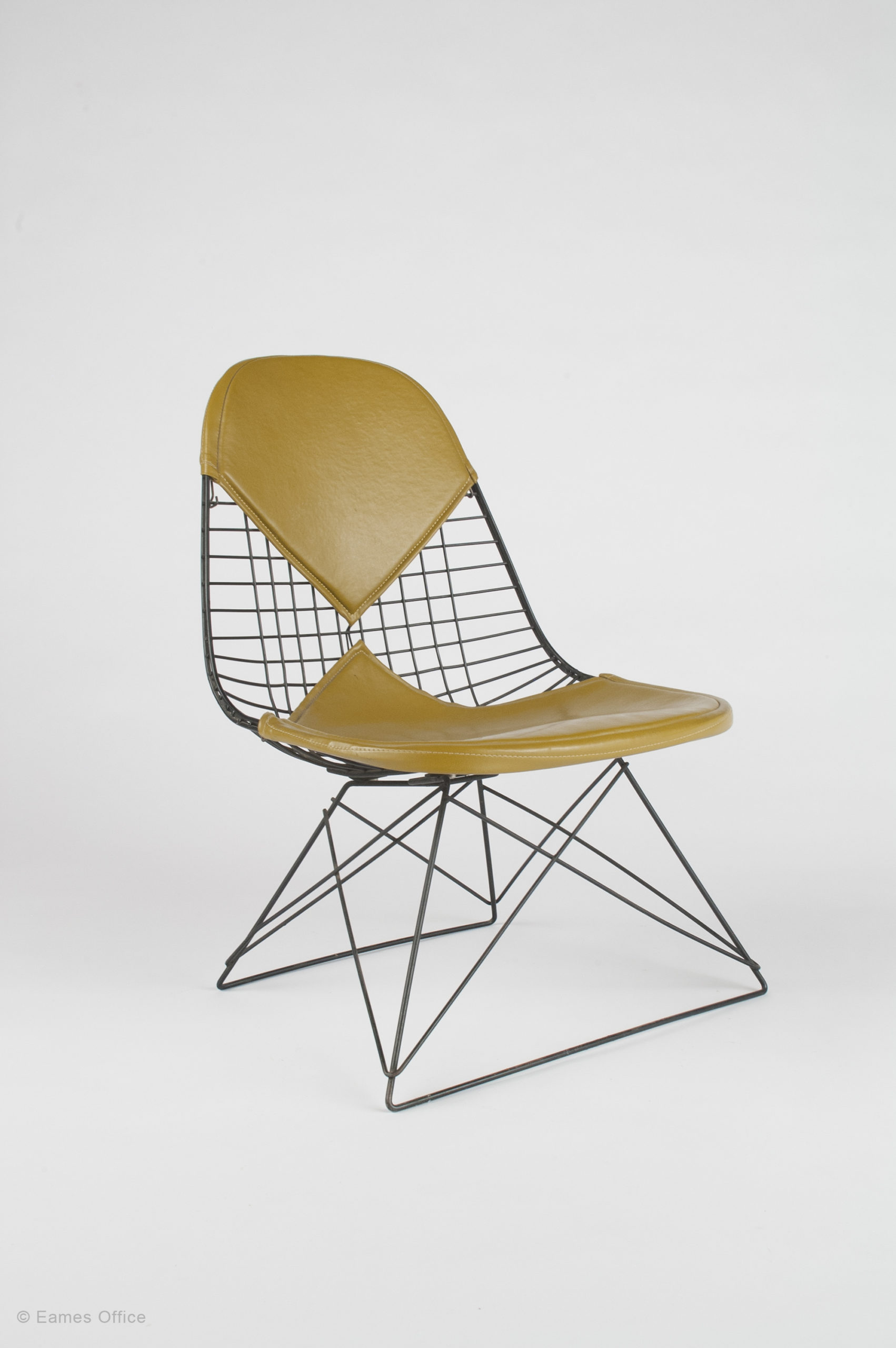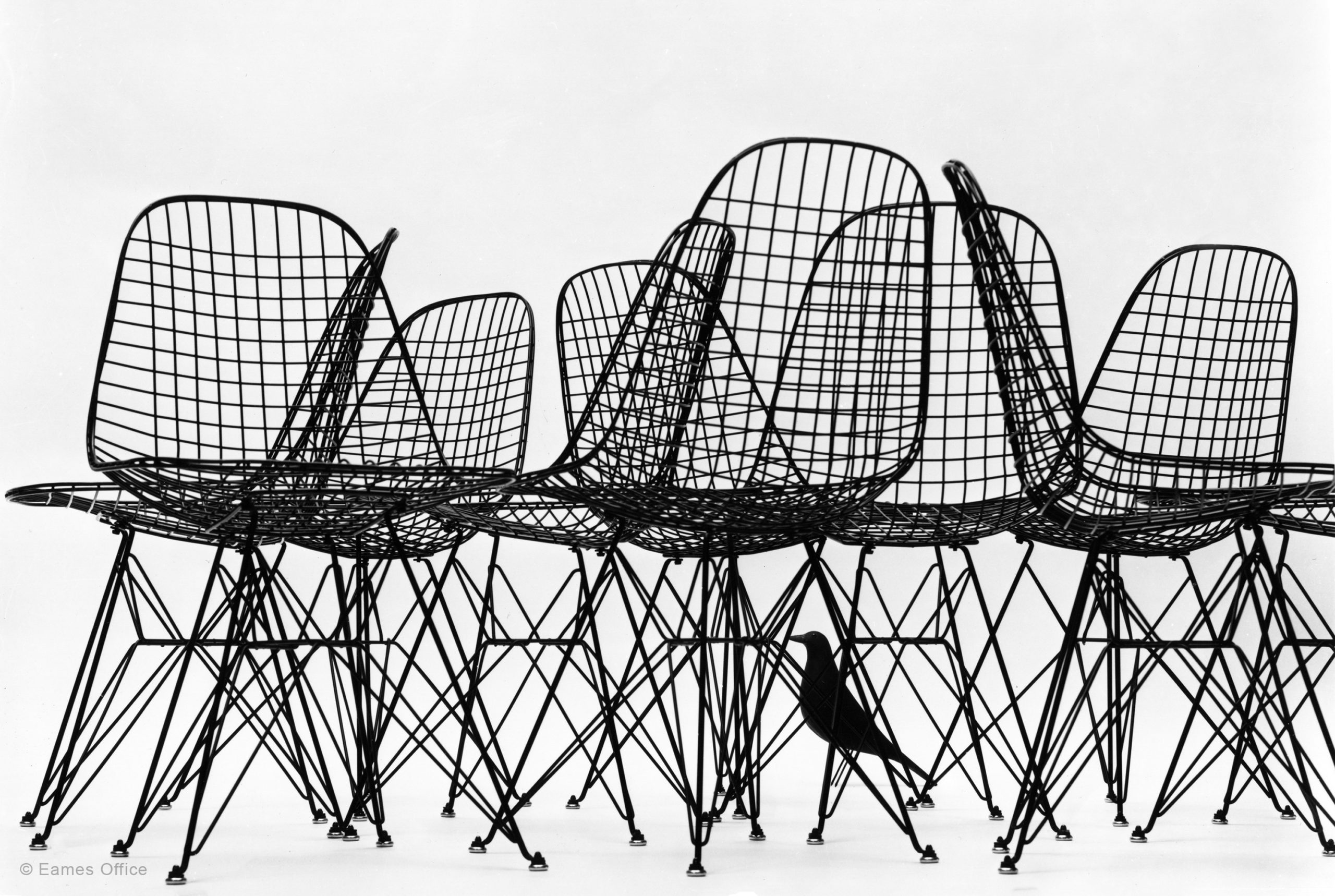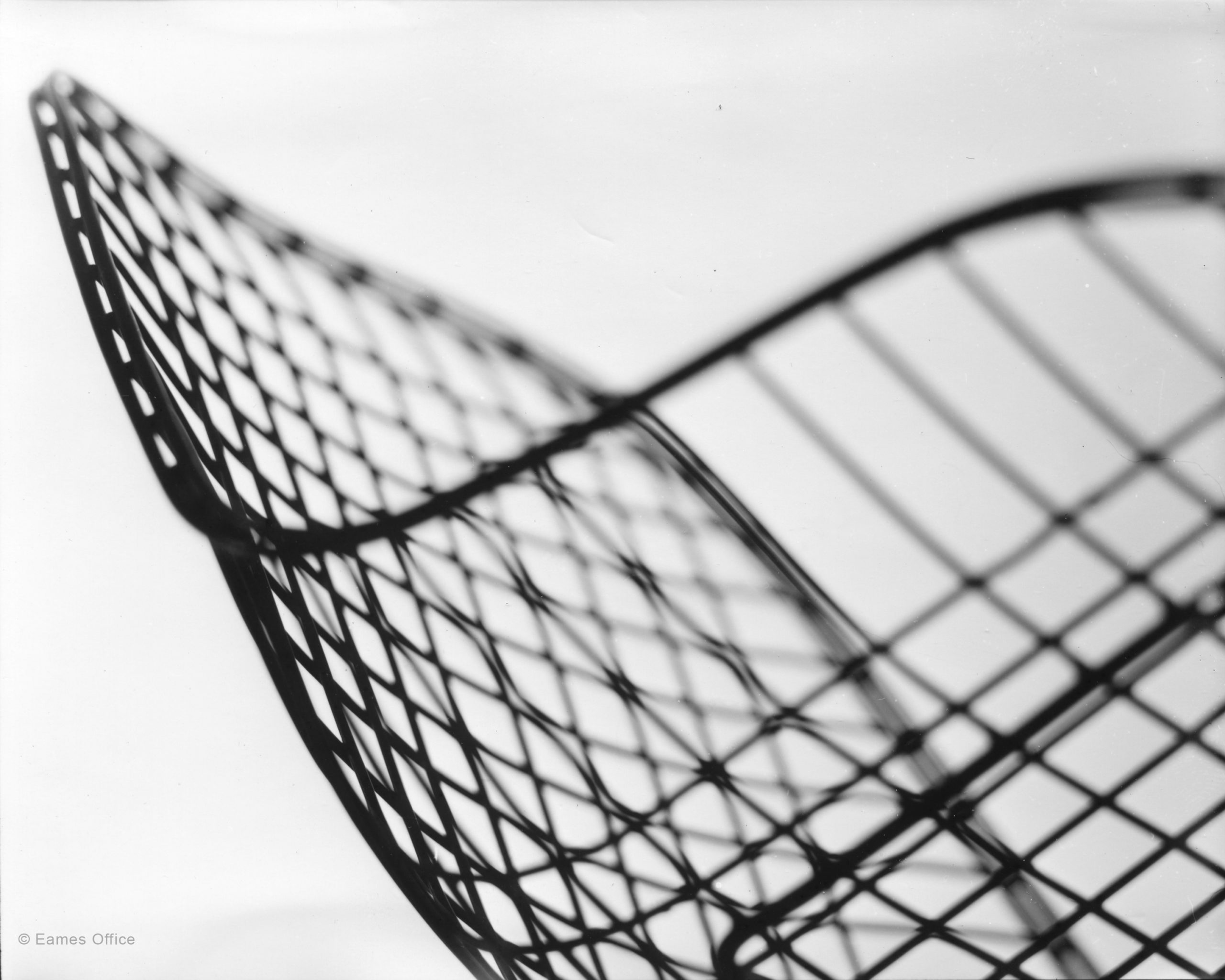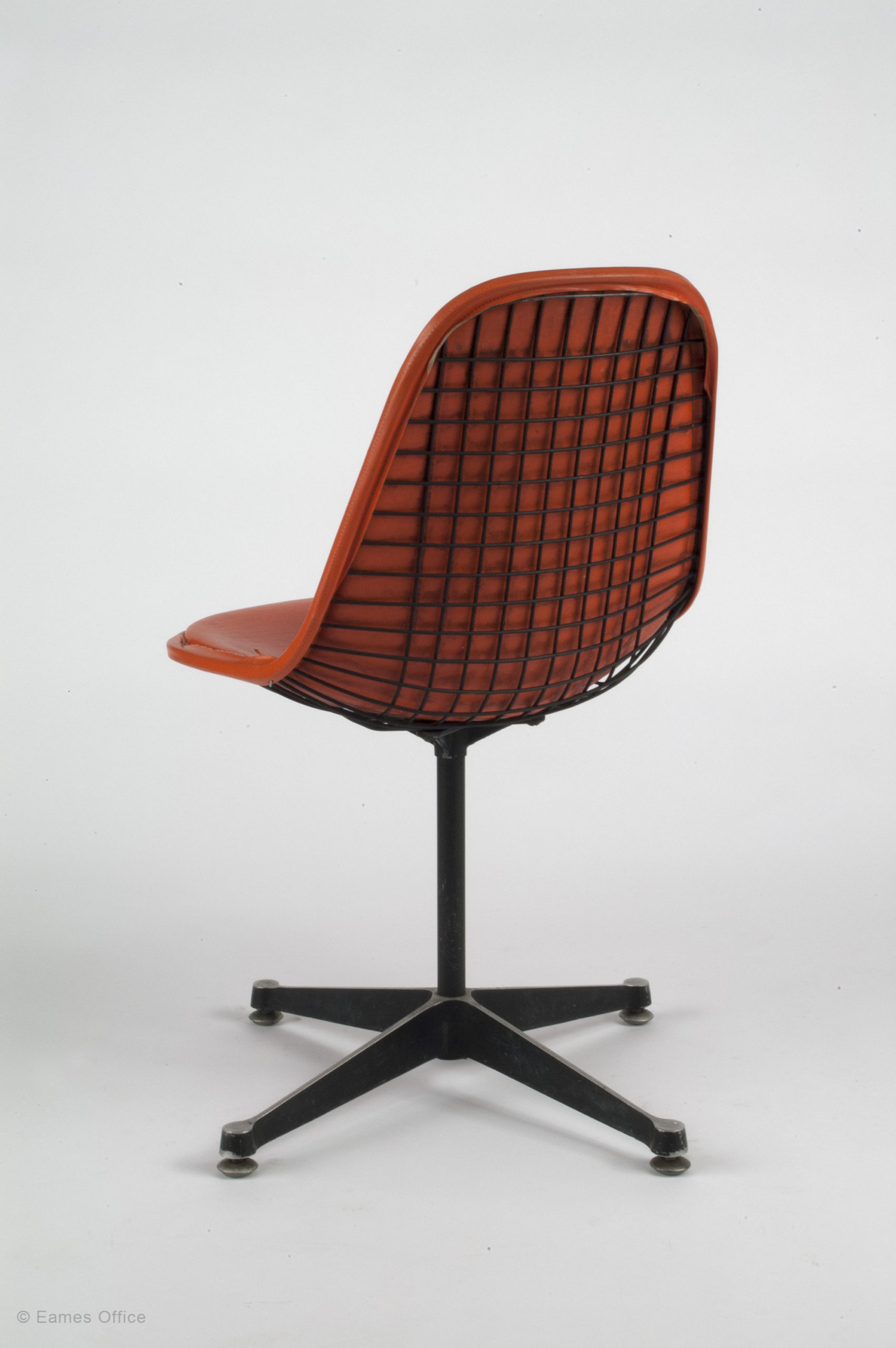Additional Information
Charles Eames described the inspiration for this design. “If you looked around you found these fantastic things being made of wire—trays, baskets, rat traps, using of a wire fabricating technique perfected over a period of many years. We looked into it and found that it was a good production technique and also a good use of material. Before the molded plastic chair had been solved, the molded wire chair was well under way.”
Long before “sustainability” became a watchword for consumers and manufacturers, in 1951 Charles and Ray Eames introduced comfortable, upholstered furniture with easily repairable, easily replaceable upholstery. The wire shell, the same form, and shape as the fiberglass side shell, was a structure to support the pads.
“In doing the wire upholstered chair, we tried to do a piece that would be of good material and yet immediately economical. In it, we exploited the wire systems, not only for the base, but for the structural shell itself. While it has many parts and many welds, it is so a part of the production system, the results are most economical. To provide further economies, we have made the bases on these shells interchangeable with the bases on the plastic chair, working on the same theory that we have in our other pieces and that is, that the chair has essentially two parts—one, a surface to receive the body, and two, a structure to hold that surface in proper relation to the ground. The upholstered pad which goes on the wire shell is made by a production technique developed in our office, and is easily removed, making a pad interchangeable.” – Charles Eames in a letter to Domus Magazine.
The first pads developed were of one piece, covering the entire wire shell, and these were not inexpensive. Ironically, the version of these chairs that have proven the most popular, the two-piece pad chairs, which the public refers to as “Bikini chairs,” were originally developed as a lower-cost alternative to the full, one-piece pads. Ray explained to a friend years later that what the public calls “the bikini” chair because of its appearance was in practice the end product of their process of removing as much as they could of the upholstery while still providing comfort where it counted.
There were six different versions of bases, whereby they could make chairs to meet six different seating needs: a pivot model of desk height—a dining or desk height model on a wood and wire structure; a dining or desk height model on a wire structure; a rocker model on a wood and wire structure; a lounge model on a cross rod base; and a very low model on a wire structure.
Explore Similar Works
Related Products
Browse a curated selection of Eames Office products we think you’ll love
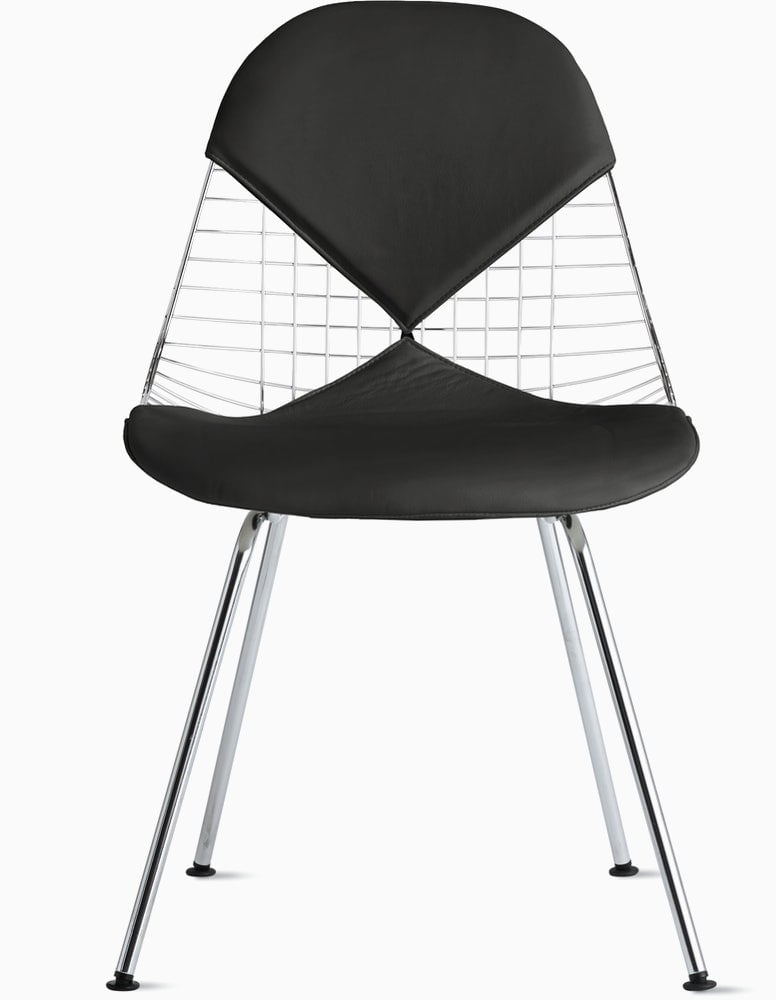
Eames Wire Chair
$1245
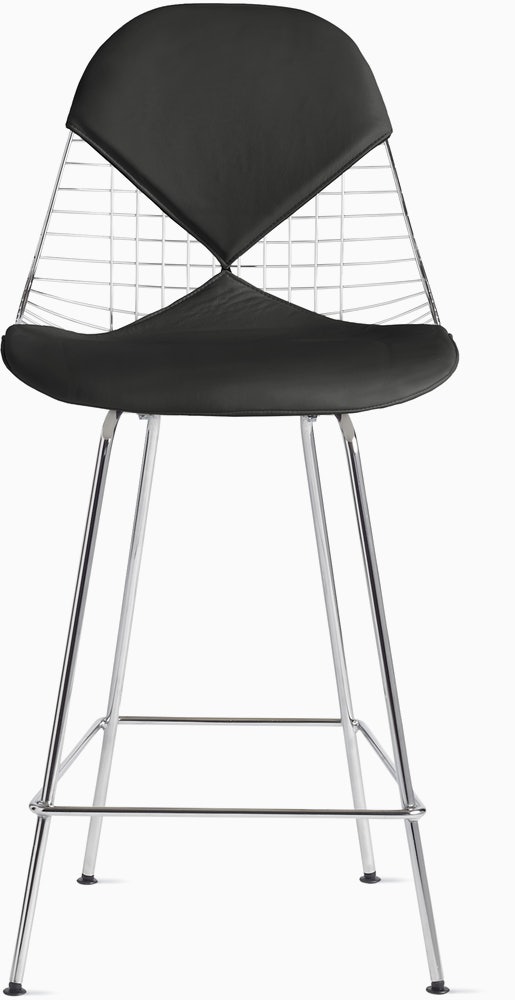
Eames® Wire Stool
$1645
